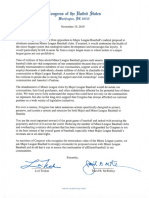TOLEDO, Ohio — Ohio is calling for new pollution runoff limits for western Lake Erie where toxic algae blooms have flourished the past decade.
State leaders announced Thursday that they want to set tougher regulations on the runoff that's feeding the outbreaks. It's a significant shift in Ohio's strategy to clean up the lake.
In its 'Lake Erie Protection and Restoration Plan 2020,' the Ohio Lake Erie Commission laid out nine priority areas it will focus on for the next two years. The first priority listed is reducing nutrient pollution, which the commission says 'continues to affect Lake Erie, particularly in the nearshore waters and the Western Basin by supporting the excessive growth of Harmful Algal Blooms.' The process includes a close review of the pollution sources and making an action plan.
In November, Gov. Mike DeWine introduced the state's H2Ohio initative. The plan focuses on reducing agriculture runoff that feeds the yearly outbreaks by offering farmers financial incentives to change their practices.
RELATED: Gov. Mike DeWine signs off on $30 million of funding for Ohio farmers to prevent algal blooms
Environmental groups had been critical of the state's past efforts. A lawsuit pending in a federal court had been seeking to force new regulatory standards that the state now appears poised to adopt.
Other priorities listed by the Ohio Lake Erie Commission in its Protection and Restoration Plan 2020 are:
- Habitat and Species
- Invasive Species
- Dredge Material Management and
- Maritime Infrastructure
- Areas of Concern
- Toxic Pollutants
- Beach and Recreational Use
- Tourism, Jobs, and Economy
- Water Withdrawals
The Commission will host one public meeting and webinar to present the plan and solicit public comment on Tuesday, Feb. 18, from 4-6 p.m. Interested persons can join the meeting live at the Ohio EPA Northeast District Office, 2110 East Aurora Road in Twinsburg, or join online by clicking here.
You can read the draft of the Lake Erie Protection and Restoration Plan 2020 below:


